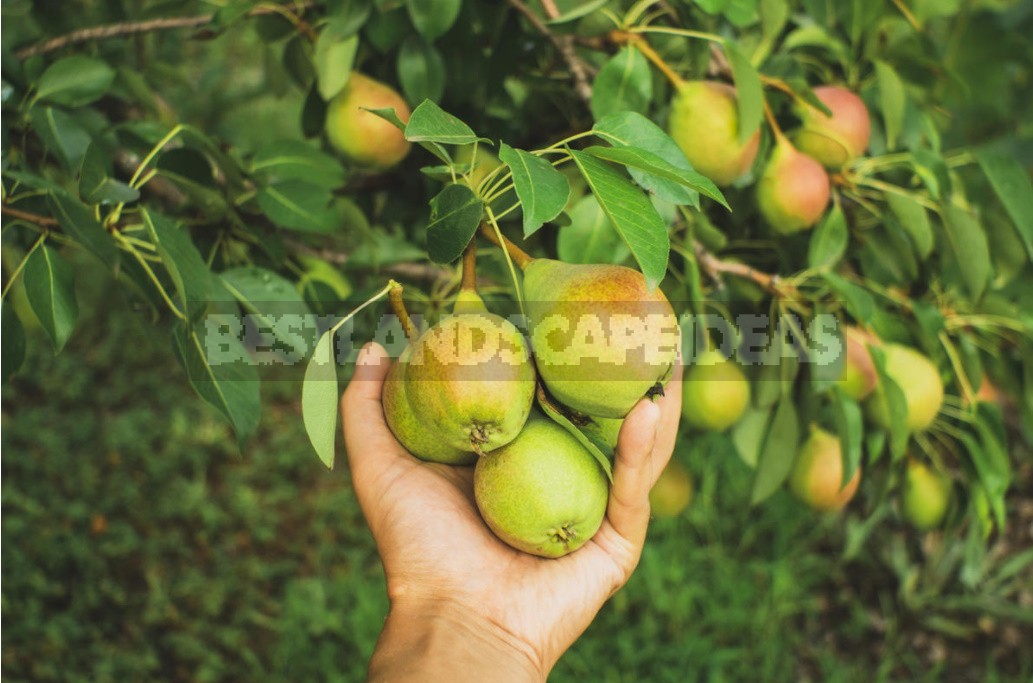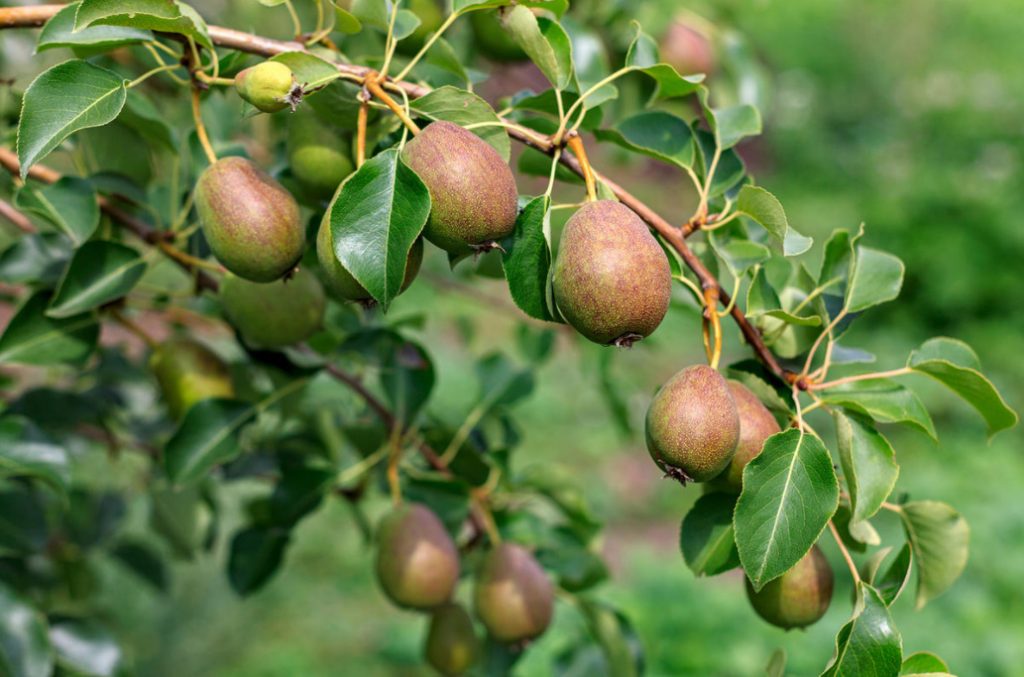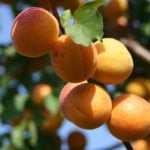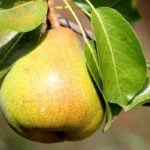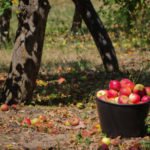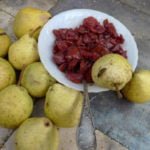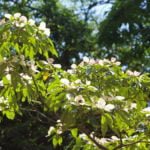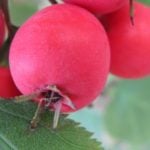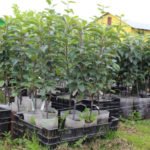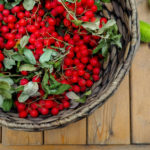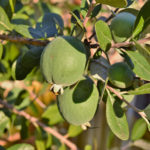Pear in the gardens of the middle zone is not often found, and not all gardeners can boast of a rich harvest of delicious fruits — but modern varieties are almost as good as southern ones in taste. However, this crop cannot be called a plant of easy care: it requires annual attention from the very first year after planting. We will briefly recall the basic rules for growing a pear and consider in detail the problems that arise during its life.
Here is the basis that you need to know.
- It is important to choose the right place for the pear: it is very light-loving, and even a small shading significantly reduces the quantity and quality of fruits. An honorable warm elevated place (but protected from the winds) will do.
- This crop is quite drought-resistant, since the root system penetrates deeply. For the same reason, it reacts poorly to closely located groundwater. Abundant watering leads to an increase in the weight of fruits, but at the same time — to a decrease in their keeping quality.
- It is relatively not demanding for soils, but on poor soils the taste of the fruit worsens, becomes more acidic.
- The pear does not like transplants even at a young age, its root system takes a long time to recover.
And now let’s turn to the main questions that are most often asked by gardeners who have planted a pear for the first time on their site.
1. On what rootstock can I grow a pear?
In the middle zone, it is optimal to grow pears on strong seed rootstocks: they are the most hardy. Dwarf rootstocks and columnar varieties are suitable only for southern regions. The pear can also be grafted on unrelated rootstock-Sorbus aucuparia, Aronia melanocarpa, different types of hawthorn and Cydonia oblonga. Be sure to leave at least one branch of the rootstock, take care of a lifetime support for such a variety-rootstock combination and do not be upset if its life span is not long.
2. Do I need to form a pear?
Absolutely! In the middle zone, only pears on strong-growing rootstocks are stable — in the future, these are trees that reach the height of a five-story house. In addition, by nature, the pear is prone to the formation of sharp angles between the branches. This is especially dangerous in the case of skeletal branches extending from the trunk: angles less than 60 degrees are easily broken — and this is a serious injury to the tree.
While the branches are thin and easily bend, you can try to correct the situation with the help of stretch marks or remove a potentially dangerous branch. Competitors — powerful shoots located at a very sharp angle to the central conductor-are mercilessly cut out as early as possible.
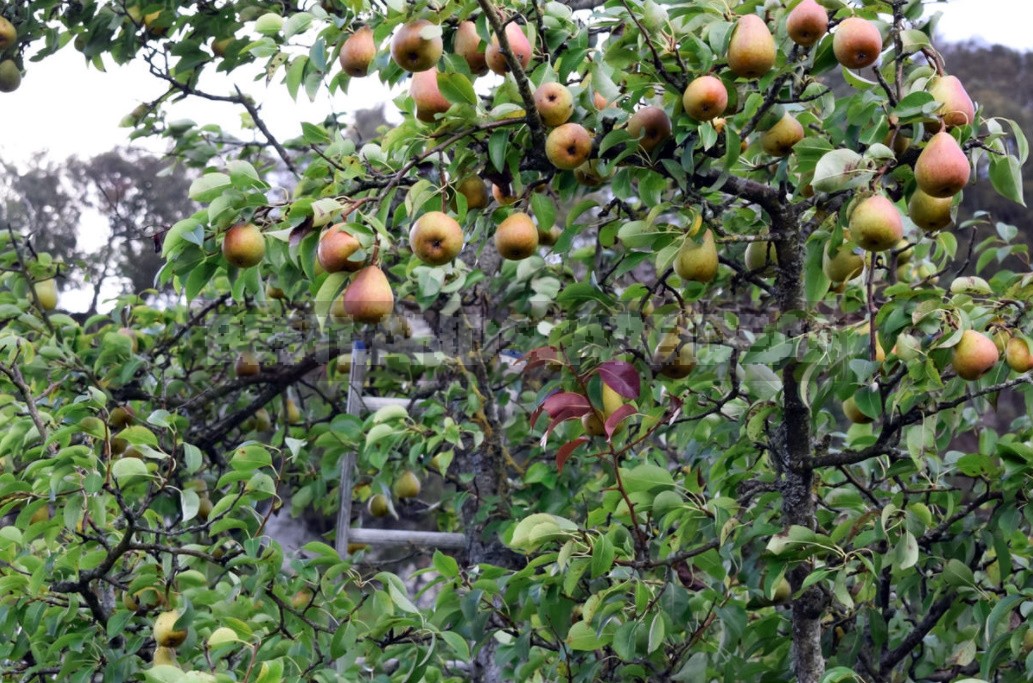
The pear is prone to the formation of a large number of tops — vertically directed shoots that greatly thicken the crown. Most of them should be deleted. However, if the top is located successfully and can become a good and strong branch in the future, shorten its top to slow down growth and stimulate branching. It is advisable to cut out the aging branches of the pear completely — and replace them with young ones formed from strong and strong tops located nearby.
Annual growth in pears on a strong-growing rootstock can reach 1.5 m. It is recommended to shorten the increments longer than 60 cm by at least a third.
3. Is it possible to shorten the central conductor so that the tree is not so high?
It is possible, but the pear will still strive upward, annually releasing numerous tops. It is necessary to shorten the central conductor only by transferring to a well-located branch, and not in an arbitrary place. You can do this in two stages.
- In the first year, shorten the central conductor to a branch located above the intended height. The pear will react with the active formation of tops in the upper part of the crown.
- In the second year, the entire top with a “broom” of tops at the desired height is removed in one cut. This does not mean that there will never be any more tops. But the pear will become smaller to strive for height.
4. In what time frame do you need to trim the pear?
Sanitary pruning is carried out at any time of the year as needed. Pruning on live wood is best done in early spring (more accurate terms depend on the terrain and weather).
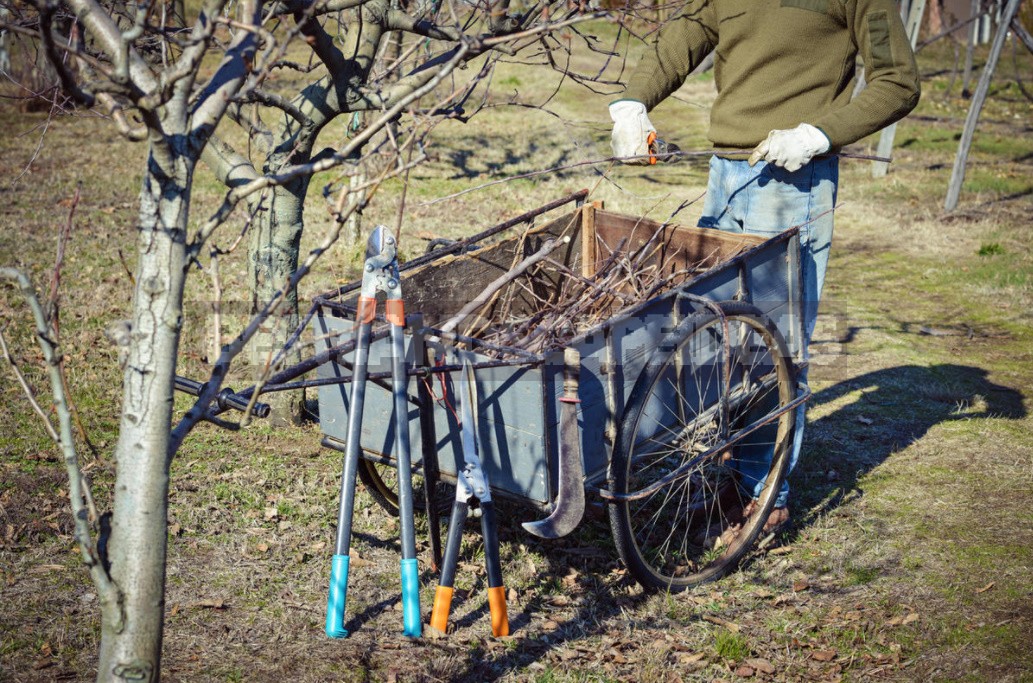
5. Why do pear leaves turn red?
The youngest leaves and the tops of the growing shoots of the pear have a reddish or brownish hue: it is so laid down by nature. If the leaves are sharply reddened much earlier than the due date, carefully inspect the tree. Diseases affecting the bark and wood are very likely to appear, and a “premature autumn” may indicate a slow death of branches.
A possible cause is an imbalance of nutrients, for example, a lack of phosphorus (the leaf turns red “from the bottom up”, from the petiole to the top, starting from the bottom side) or an excess of lime, which prevents the absorption of iron. In some years, the leaves turn red as a result of prolonged drought or, on the contrary, stagnant moisture after heavy rains. Well, the most serious case is that the vaccination was done incorrectly, the rootstock and the graft are incompatible,and rejection began.
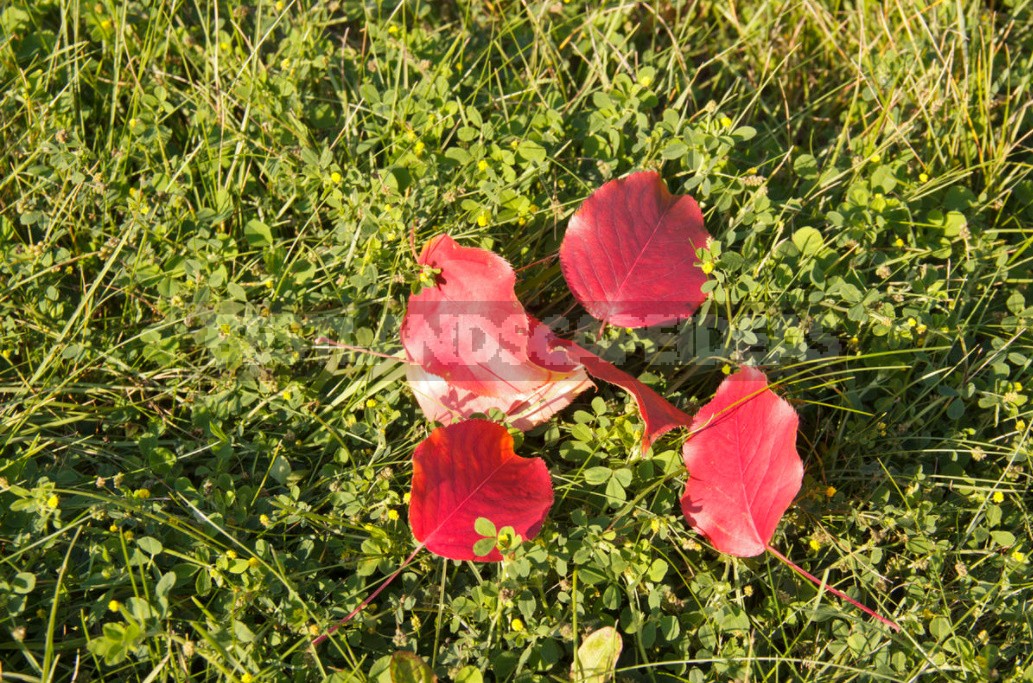
6. Why does the pear not bear fruit?
Most often, the reason is the lack of a suitable pollinator. Pears have low self-fertility, so it is recommended to grow at least two trees of different varieties.
In a harsh winter, flower buds can be damaged, then the flowering will be weak, if at all. And if it was abundant, and there are no fruits, then there was no pollination. In some years, a cold and rainy May happens — pollinating insects fly poorly, and, accordingly, you should not expect high yields.
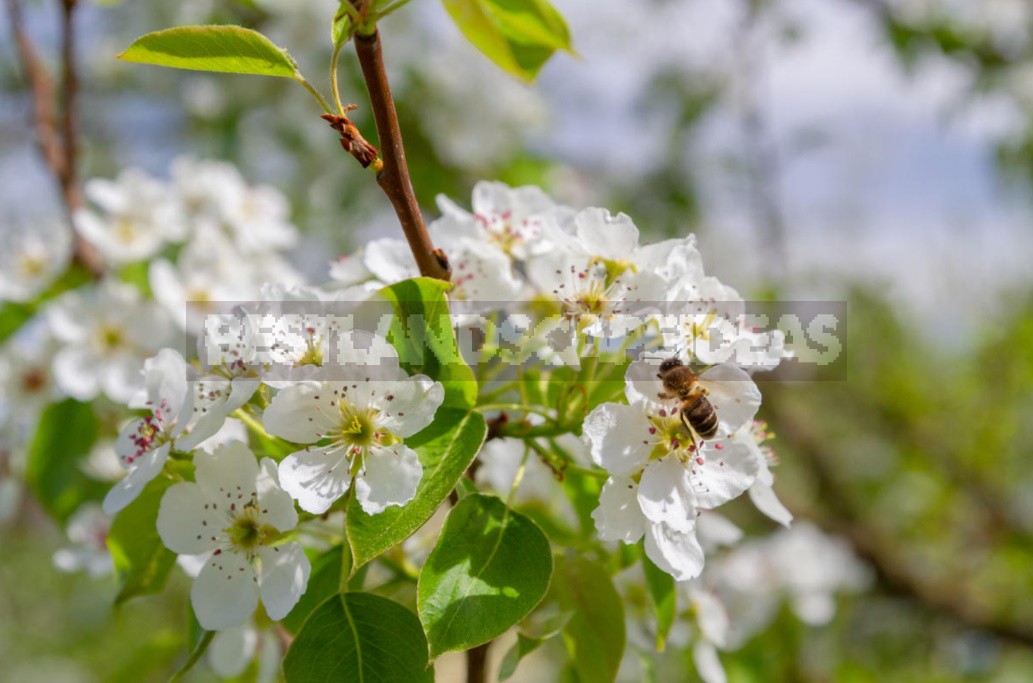
If the flowering trees fall under the frost, the flowers and ovaries will be damaged, which will affect the fruiting this year. Flower buds of varieties of southern origin are systematically frozen if they are grown in more northern regions.
Remember that old varieties come into fruiting later than modern ones. In some cases – at the age of 15 years!
The pear does not feel well in the shade and in areas with strong winds. Finally, the pear may lack nutrients. It is necessary to apply fertilizers to the place where the young suction roots are located. Either clearly along the periphery of the crown projection, or 50-100 cm further than it.
